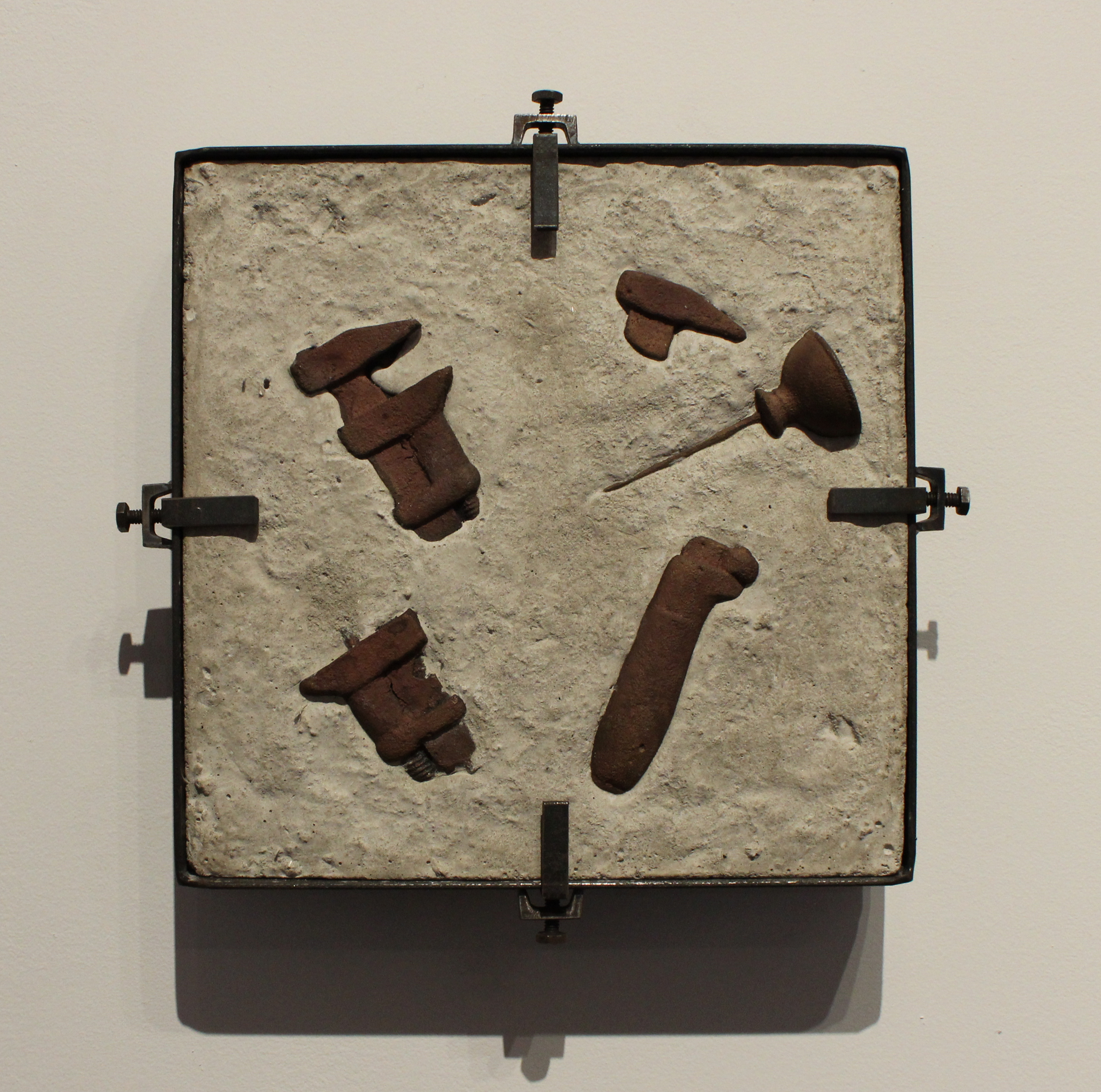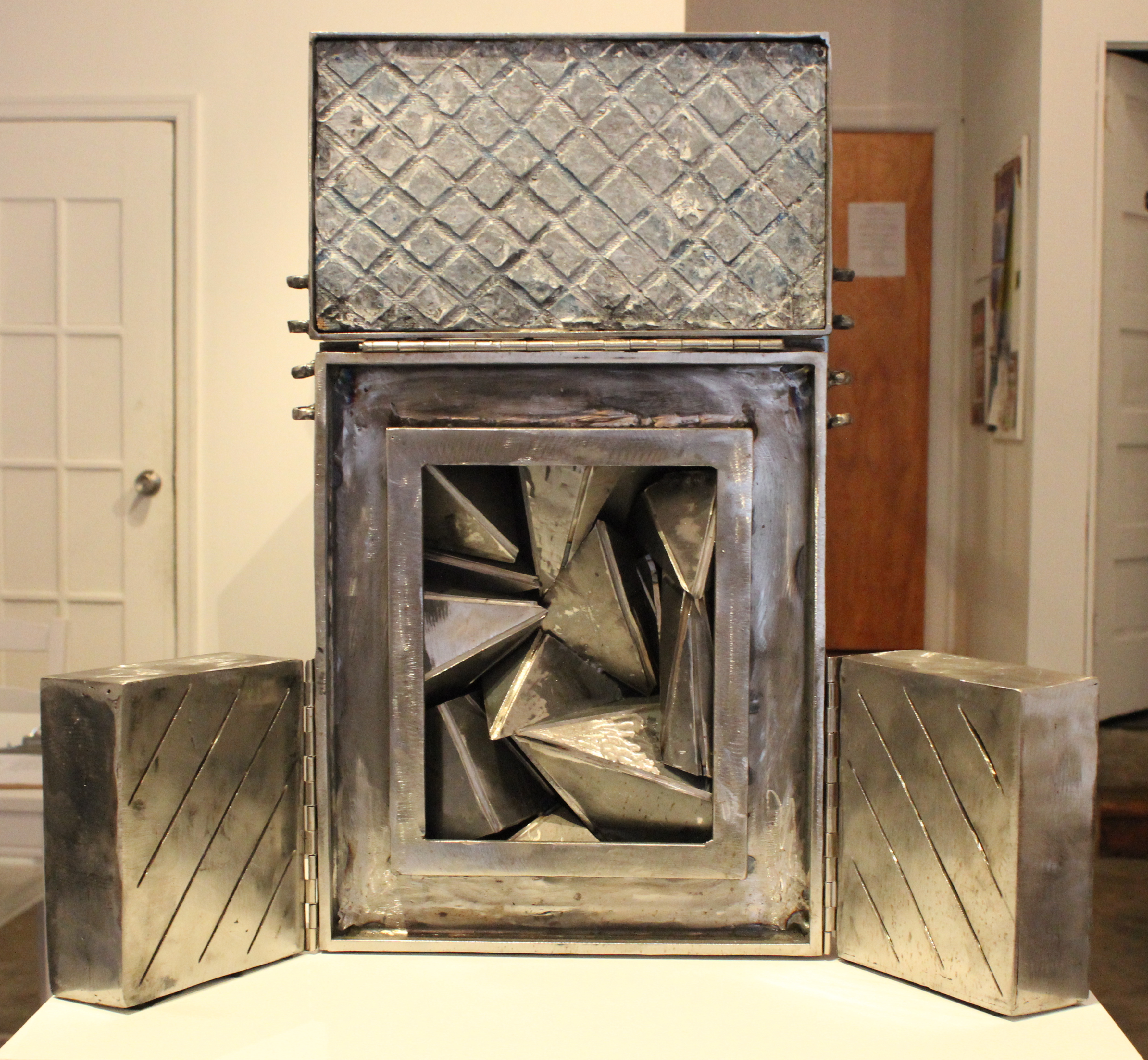
Artist interpretations and metal reactions at the Philadelphia Sculpture Gym
Above: Bryan Brown, “Oxidation 1” (detail). Photo courtesy of Philadelphia Sculpture Gym.
At the Philadelphia Sculpture Gym, one of the toughest, most versatile materials is the focus of the current exhibit. “Process Metal IV,” organized in this Knight Arts grantee’s gallery space, explores the various faces of metal as it is used in the sculptural process. Glimpses of the industrial and the mechanical should come as no surprise, but some other themes, like those of religion, bend the medium to an artist’s whims in ways we might not expect.

Phillip Scarpone, “Rotante Sediment #1.”
Phillip Scarpone includes a pair of artworks entitled “Rotante Sediment #1” and “Rotante Sediment #2” that consist primarily of steel and concrete. Through the slant of the post-industrial Northeast, which Philadelphia epitomizes, these creations look as much like a happenstance of decaying manufacturing facilities as an artistic composition. In one square and one rectangular frame, bits of rusted wrenches and oil cans jut out from a concrete surface that, were it not hanging vertically, would appear viscous. From this vantage point, these industrial islands could be inexplicably floating in a sidewalk sea. Instead, they are entombed and static, much like the neglected factories where American labor used to produce physical goods.
Following from the more raw, eroded nature of Scarpone’s work, Bryan Brown provides three pieces that offer a more clean and contemporary take on mechanics and assembly. In “Oxidation 1” and “Oxidation 2,” Brown creates structures that look partly like medical tools and partly like computer components (not that the two are mutually exclusive). Inside small bulbs of borosilicate glass filled with oxygen, the artist has affixed tiny slivers of different metals–gold, platinum, silver, zinc, copper, iron, titanium and aluminum–to demonstrate the effects of oxygen on these substances. In the third piece, “Liquid/Solid,” we find a similar glass enclosure with a bit of gallium inside of it. Gallium, which has applications in nanotechnology, among others, has an extremely low melting point, at just above room temperature. As a result, the globule here doesn’t appear fully liquid, but it toes the line.

Michael Benevenia, “Canto V.”
Aside from the industrial, technological and scientific uses of metal, not to mention the broad overlaps among these, Michael Benevenia takes a more transcendental approach. His tryptich of sorts, titled “Canto V” after Dante Alighieri’s first foray in hell in the “Divine Comedy,” most resembles a portal. Inside the central section, surrounded by open, hinged doors, we find a crystalline formation in the shape of triangular metal pyramids in the entryway. These jagged forms are foreboding, much like the unearthly imagery of Dante’s allegorical journey from the underworld to paradise. Sitting centrally in the room, it provides a supernatural starting point for an otherwise scientific show.
Metal is simultaneously harsh and hard, yet lustrous and reflective, calling on a range of emotions and responses to its many forms. As a vehicle for machinery and computing, it is indispensable, and has served humanity for thousands of years. At the Philadelphia Sculpture Gym, artists react to one of the most ubiquitous substances, while the metal reacts back. The exhibit will be on display through the month of February.
Recent Content
-
Artsarticle ·
-
Artsarticle ·
-
Artsarticle ·

